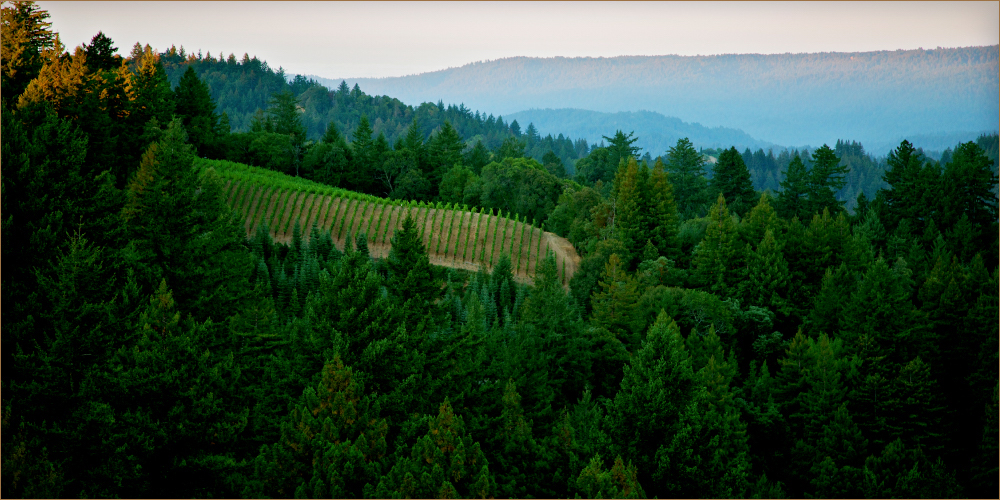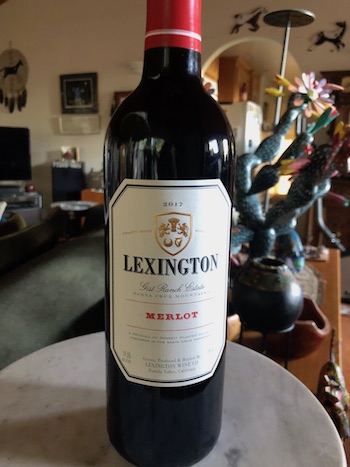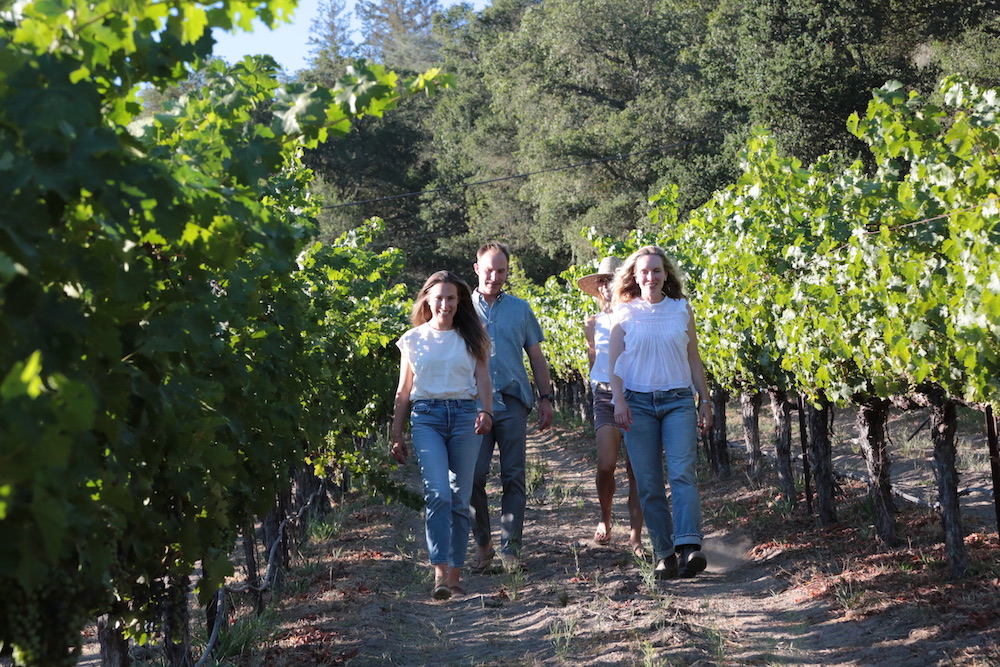
October 7, 2022 – There’s a lot going on in October, from spooky Halloween haunted houses and a projected candy shortage, to Breast Cancer Awareness, of which there is no shortage. It’s also Merlot Month, so grab a glass of Merlot while I tell you a tale about a grape that was once on everybody’s lips and in their hearts.
Not every varietal gets its own month, but after the body blow inflicted by Sideways, the makers of Merlot in California decided it was time to show off why this highly popular red wine still holds top billing as the #3 red wine variety purchased in the United States.
Prior to the dramatic ascension of Pinot Noir, which came courtesy of Miles in the 2005 movie Sideways, who declared he wasn’t drinking any f&%g Merlot, this variety was a healthy #2 in sales and appeared prominently at the top of wine lists everywhere. It had become a go-to for red wine drinkers who preferred its forthright delivery of Bing cherry and pleasing notes of chocolate and leather, generally layered with soft tannins, unlike the more sturdy and stiff ones of Cabernet Sauvignon.

Did you know that Merlot is far and away the most widely planted red variety in Bordeaux? In fact, it is the most widely planted red in all of France. Merlot makes up two-thirds of the red grape plantings in Bordeaux, with 22% for Cabernet Sauvignon, 9% Cabernet Franc, with the last 3% split between Petit Verdot, Malbec and a tiny amount of Carmenère. Worldwide, Cabernet Sauvignon and Merlot are the two most widely planted reds.
Merlot is seeing a bit of a renaissance among red wine lovers who appreciate approachable fruit, smooth structure and a velvety mouthfeel. A trick to identifying Merlot vs. Cabernet Sauvignon is the color. Merlot is generally ruby red in hue, with an orange glow around the rim: it looks inviting and smells predominantly of cherries. Cabernet is generally darker and has no glow around the rim. If it’s a Bordeaux style blend and has a lot of Merlot in it, that telltale bit of orange just might clue you in.
Climate change is definitely having an impact. Merlot planted where you’d typically find Cabernet Sauvignon and Cabernet Franc, has the advantage of ripening early, so it can generally be safely harvested before the typical ravages of fire season which have tended to occur more often in late September into October, when the offshore winds set up. Cabernet Sauvignon and Cabernet Franc, on the other hand, generally require much longer hangtimes and can find themselves victims of the increasingly common occurrence of October wildfires.
We’ve been really lucky with harvest so far this season: more on that next week.
With a whole month, you have plenty of time to try all of the Merlots we have in our slice of the Central Coast: there just aren’t that many of them.
Off the top of my head, these are some of the local producers that come to mind:

Assiduous – 2021 Merlot, Kells Vineyard (from the Los Altos Hills, eastern side of Santa Cruz Mountains), $25. The last vintage I tried was 2019, which was done carbonically by winemaker Kegan Mayo (who joined Bargetto in 2017), was very fun and fruity. He says he’s been making it the same way, as it’s so popular.
Bargetto Winery – There are three Merlots on offer, including a 2019 Central Coast version ($17), 2018 Regan Vineyard ($28) and 2019 Regan Vineyard Reserve ($40). I remember when John Bargetto wanted to rip these vines out as they took so long to ripen grapes back in the day. But with better farming practices and the very real influence of climate change, this vineyard produces excellent fruit.
Bernardus – 2019 Merlot, $50 and 2014 Marinus Blend, $75. The 2019 Bernardus Merlot is gorgeous and fleshy, with all the stature of Bordeaux but softer, more pliable tannins, and fleshy cherry and cranberry fruit enrobed in chocolate: one of the best examples of approachability with a serious pedigree out there. The 2014 Marinus is a classic Merlot dominant blend, with 52% Merlot, 27% Cabernet Sauvignon, 11% Cabernet Franc, 7% Petit Verdot and 3% Malbec.
Burrell School – 2018 High School Sweethearts: Named for Anne and Dave who were high school sweethearts, this wine combines the peppery, bold zestiness of Merlot (Dave) with the smooth, silky elegance of Cabernet Franc (Anne). On sale for $20 (reg $35)
Chesebro – 2017 La Grava, Cedar Lane Vineyard, Arroyo Seco, $30. La Grava means ‘the gravel’ in Spanish, and refers to pays homage to the gravely soils at Cedar Lane Vineyard. Comprised of 70% Merlot and 30% Grenache, its enormous bouquet of black cherries, sage, leather and black tea is matched nicely by silky tannins and spice.
De Tierra – 2017 Russell Vineyard Merlot, Carmel Valley, $38.
Hahn – 2018 Hahn Winery Selection Merlot, $30.
House Family – While they don’t have a recent vintage on their list, they do offer the 2009, 2010 and 2012 vintages of their estate Merlot. These were good vintages, and are probably aging quite beautifully.
Perrucci Family Vineyard – 2019 Regan Vineyard Merlot ($38): Double Gold medal winner, $38 – smoking hot right now, says Greg Perrucci
Rexford – 2017 Ingalls & Swift – 65% Merlot and 35% Cabernet Franc ($36). Their first red wine blend, it’s named for where they’ve been producing Rexford from the beginning.

Russell Joyce Wines – 2018 Estate Merlot, Carmel Valley, $68.
Silver Mountain – Jerold O’Brien puts his Merlot into a Bordeaux blend called “Alloy.” Both 2013 and 2014 are still available.
Thomas Fogarty Winery – 2017 Lexington Merlot, Gist Vineyard: From a vineyard on Skyline Blvd (Highway 35) overlooking the Big Basin watershed, comes this bold knight, suited up with stalwart layers of black cherry, leather, gravelly tannins, mountain spice and plenty of grip. $70.
The 2016 Lexington Merlot from Fogarty is just about sold out, but is epic, so grab some if you can. It’s worth noting that their 2015 Apex, which I tasted the other day at the winery, is predominantly Merlot, and is absolutely amazing: worthwhile and then some at $110/bottle. Buy the older vintages now: you cannot buy time. And the bottles just get more costly as they age. (The 2016 Apex relies on Cabernet Sauvignon.)
Viticulture expert, Prudy Foxx, reports that we’ll be able to try some Zayante Merlot from the fabulous own-rooted and dry-farmed site that captured my imagination well over 30 years ago, while visiting Greg Nolton and Kathleen Starkey-Nolton, who planted this mountain vineyard.

Foxx says that Diana Snowden Seyesse, winemaker at Ashes & Diamonds in Napa, as well as for her own brand, Snowden Vineyards, just released a Zayante Merlot. A 2021 vintage done with no new oak, it’s called “Cousins,” after Diana’s three cousins with whom she collaborated. The cool thing about the project is that the wine is packaged as sustainably as possible, in hopes to encourage people to reuse glass. The production part of glass bottles is absolutely the most energy-intensive portion of the winemaking process. She’s ditched the metal capsule, used a cork closure, and a washable label to enable the glass bottle to be cleaned and refilled. The wine sells for $40.
Take a sip and discover what might become your new favorite crush. There’s a lot to know about Merlot, and, there’s a lot to love. And just for the record, it was Merlot (1961 Château Cheval Blanc from Saint Emilion) that Miles drank at the end of the movie, to console himself on his otherwise poor life choices. At least he got the wine right!
About the author
Laura Ness is a longtime wine journalist, columnist and judge who contributes regularly to Edible Monterey Bay, Spirited, WineOh.Tv, Los Gatos Magazine and Wine Industry Network, and a variety of consumer publications. Her passion is telling stories about the intriguing characters who inhabit the fascinating world of wine and food.
- Laura Nesshttps://www.ediblemontereybay.com/author/lness/
- Laura Nesshttps://www.ediblemontereybay.com/author/lness/
- Laura Nesshttps://www.ediblemontereybay.com/author/lness/
- Laura Nesshttps://www.ediblemontereybay.com/author/lness/


